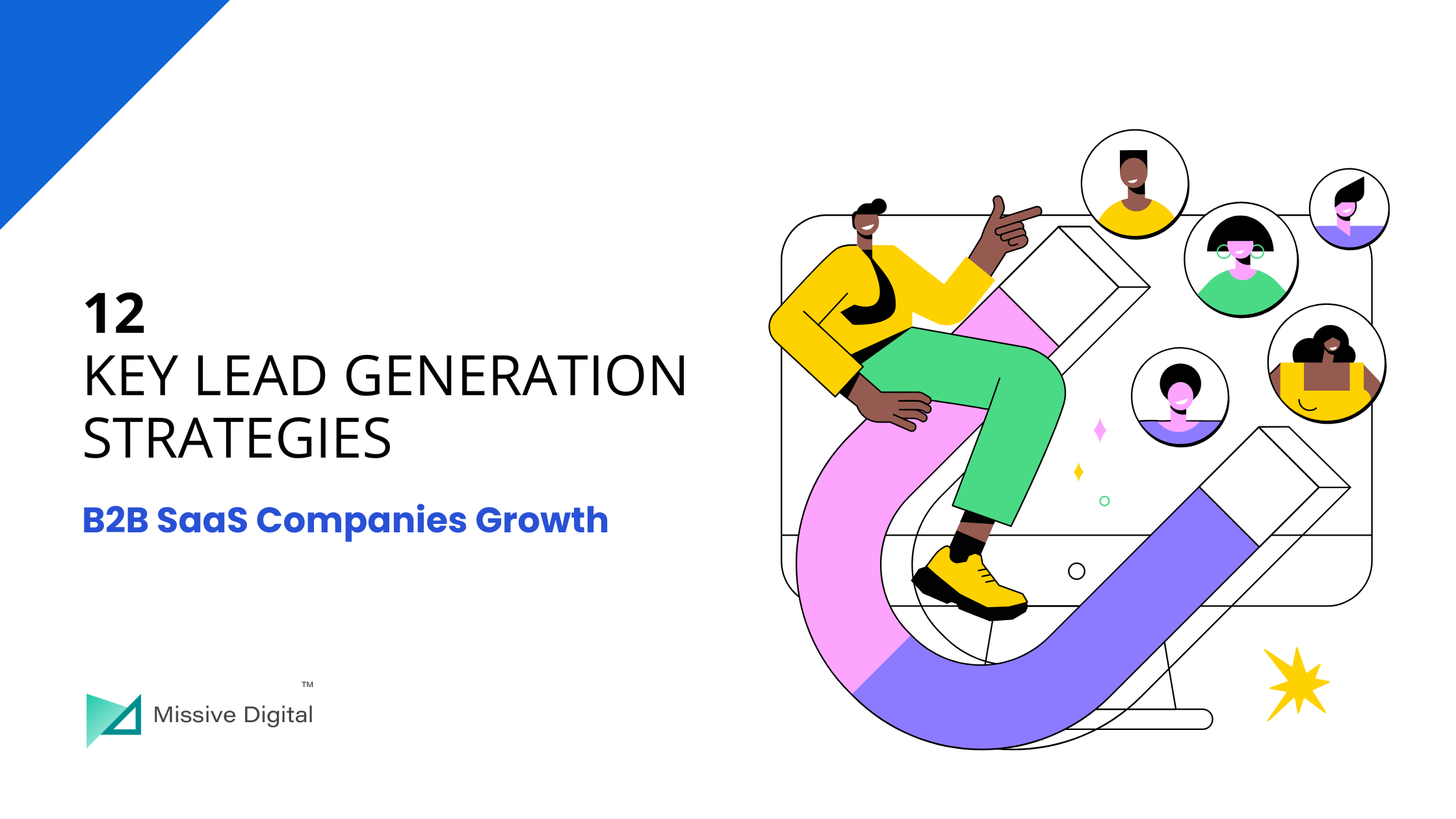Having an effective lead generation strategy is critical for the growth of any business, whether it be a startup or an established one.
Finding initial customers is always crucial, as I said during my eChai panel in January 2021, but maintaining the flow of the right leads is what matters the most.
Unless you are driving interest in your products and services, attracting new customers, and establishing brand awareness, your business will find it difficult to succeed.
Hence, it’s crucial for B2B SaaS companies to know how to generate leads and maintain a constant flow of leads.
In this article, I’ll discuss the various lead generation strategies your sales & marketing team can utilize to maintain a healthy flow in the sales pipeline.
Let’s start by understanding what a lead is.
What is a Lead?
A lead is anyone who expresses interest in a company’s offerings in some way, shape, or form.
When someone opens up communication with a business or organization (by providing personal or contact information for an offer, trial, or subscription), it’s considered “lead generation.”
People are more likely to entertain such businesses rather than get a random cold call from a company that purchased their contact information.
Suppose that you download an eBook to learn more about Salesforce alternatives. Then, a few days later, you received an email from the CRM software provider about how they might assist you with your customer relationship management. Would it be less intrusive if they’d called you out of the blue without knowing if you cared about your customer relationship? This is what it feels like to be a sales lead.
From a business perspective, the more information they acquire about the potential customer, the better they can personalize the sales offer or communication.
Leads are part of the sales funnel, where the prospect becomes the customer. The following sales funnel diagram clearly states that leads were once strangers and visitors.
Moreover, leads are of different types based on their nature and mode of acquisition. Following are the types of leads based on their lifecycle stage.
Marketing Qualified Lead
A marketing-qualified lead (MQL) is someone who has interacted with your marketing team but is not ready to receive a sales call. For instance, an MQL is someone who fills out a form on a landing page to download an eBook.
Sales Qualified Lead
A sales-qualified lead (SQL) is someone who has taken action to express their interest in becoming a paying customer. For example, a website visitor who fills out a form to ask a question about your product or service is an SQL.
Product Qualified Lead
A product-qualified lead (PQL) is an existing customer who has used your product and showing the willingness to become a paying customer by taking a specific action.
Typically, PQLs are used by businesses that offer a free or limited version of their product with the option to upgrade (such as Semrush and Ahrefs!).
A customer who uses your free version and shows interest in the premium features is an example of a PQL.
Service Qualified Lead
Such leads are potential customers who have explicitly requested assistance from your service team to become paying customers.
For example, a customer who requests an upgrade from their customer service representative is considered a service-qualified lead.
Alright, before I jump on to knowing the best lead generation strategies, let’s understand the different types in which they fall.
Types of lead generation strategies B2B and SaaS companies rely on
Lead generation strategies can either be inbound or outbound. While marketers argue about the merits of one over the other, both types of lead generation strategies are effective in the real world.
Inbound lead generation strategies
The inbound lead generation strategies involve educating leads about the product or services and asking their permission to contact the company.
These types of strategies support interaction with the audience and rely on creating the most valuable content.
Among the lead generation strategies I’ll discuss in this article, the following are the inbound ones:
- Leveraging SEO for all customer journey stages
- Using AI-powered chatbots to nurture leads
- Posting blogs to educate prospects
- Hosting or participating in webinars
- Using video marketing
- Publishing and sharing eBooks
- Sharing content on Facebook and LinkedIn groups
Outbound lead generation strategies
Outbound lead generation strategies involve selling products or services to prospects by facilitating one-way communication with them. These types of lead generation strategies typically rely on spending a huge chunk of money.
Among the lead generation strategies I’ll discuss in this article, the following are the outbound ones:
- Performance marketing through Google, Twitter, Facebook, and Local Media
- Using LinkedIn Sales Navigator
- Email Drip campaigns
- Influencer marketing
- Industry events and trade shows
- Referral marketing
12 top lead generation strategies for B2B and SaaS companies
Following are the top lead generation strategies businesses can use to drive more prospects into their sales funnel.
1. Broadcast Advertising to Your Market Niche
Let’s start with the paid strategies for lead generation. These strategies are quick to implement and drive faster results for businesses.
Google Search Ads
Pay-per-click ads on Google are one of the best-paid lead generation strategies for businesses, especially for those who are new to the business and doens’t get adequate website traffic organically.
However, you should take the following factors into consideration while running ads on Google:
- Every click costs you money. So make sure you’re running ads for the most relevant queries. You can use a PPC keyword tool for this. I found Semrush the best for this during our Semrush review.
- Your ad copy should be attractive and engaging. Successful marketers perform A/B testing to get the best copy out.
- Also, plan your bid strategy beforehand; otherwise, you’ll burn through your budget.
- Ask your designers and copywriters to create an interesting and relevant landing page that is focused on lead generation.
Twitter Ads
Twitter is a giant social media network that provides both a wide reach and heavily customized targeting.
Before 2016, marketers could utilize Twitter’s Lead Generation Cards to generate leads, but these have now been replaced by an extensive range of marketing and lead generation resources under the Twitter Business umbrella.
The platform provides a very straightforward method to create new ad campaigns and manage them.
On top of that, the way the ads appear in the Twitter feed is very interesting. They blend in with the user-specific content, except for the tiny statement in the following example – Promoted by Autodesk.

Facebook Ads
Even though it is a common conception that Facebook is exclusively for B2C lead generation, it can also be an effective strategy for B2B marketing campaigns.
Facebook’s Ads Manager for lead generation is specially designed for this purpose and works in the same way as LinkedIn’s Lead Gen Forms, providing a multitude of lead magnets, including:
- Product tests and demos
- Newsletter sign-ups
- Lead generation forms
- Deals, coupons, etc.
You can use this tool to create ads, schedule when and where they will appear, and track their performance toward your marketing objectives all at once.
Here is an example of a B2B brand using the Facebook Ads platform to spread awareness.

Mark Roberge, one of the biggest names in SaaS sales, is shown as a valuable resource in this eBook. There are several things InsightSquared does well in this ebook promotion, in which the ‘Free eBook’ call-to-action is prominent.
Local Media Ads and Listings
If your firm focuses on local or regional marketing, or if you employ traditional or offline marketing techniques, local media advertisements and listings can be a good lead generation strategy.
This lead generation strategy includes:
- Getting exposure in online as well as offline publications by posting sponsored content, running paid advertisements, or maybe attending as an expert
- Listing the business in niche directories
- Making sure that Google My Business is accurate and up-to-date
2. Use LinkedIn Sales Navigator for Lead Generation
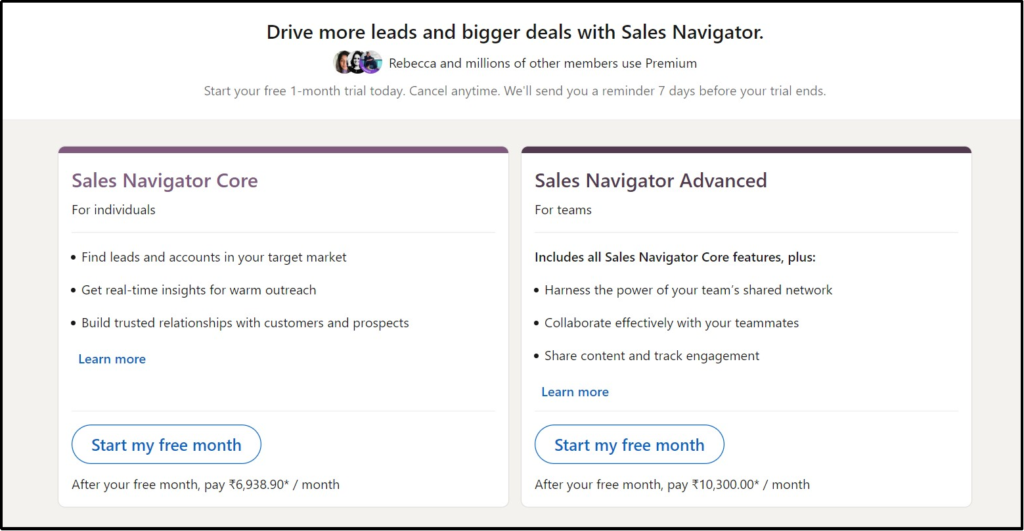
It is the best LinkedIn package for sales professionals. Sales teams can connect with contacts and accounts within the LinkedIn ecosystem to generate leads.
LinkedIn states that the goal of Sales Navigator is to help sales professionals reach the right decision-maker by providing a powerful set of search capabilities, improved visibility into extended networks, and personalized algorithms.
Sales Navigator learns from the searches and automatically starts combing through LinkedIn data to contribute lead recommendations that are tailored to the search criteria.
The Sales Navigator learns from what the user searches on the platform and automatically starts grooming through LinkedIn data to provide lead recommendations that are specific to the search criteria.
With more than 722 million active users across the world, LinkedIn Sales Navigator is one of the best lead generation platforms for B2B companies.
3. Post Blogs and Reports to Educate and Attract Your Prospects
Maintaining an active blog is a great strategy for generating organic website traffic and new organic leads. A recent study by Orbit Media Studios found that over 50% of organizations say that their blog is delivering ‘strong marketing results,’ especially when:
- They collaborate with other players in the industry
- The blogs are of 1,500+ words
- Have visuals to offer a good reader experience
- Have proofread by editors

Moreover, even though B2B blog posts are usually more research-heavy, they should still be engaging and accessible to the decision-makers for whom they’re meant.
For example, I generally post blogs that are of more than 1,500 words. This helps us discuss the topic in detail and provide value to the reader. However, it gets tricky to write engaging articles that are of huge word count. Here, the catch is to structure the article using headings and stick to the storyline.
Here is an example of one of my posts that shows how I was able to stay on the core topic despite it being a broad topic. What is organic marketing?
4. Create a separate content strategy for SEO
Everything you do to increase your site’s visibility and its content’s prominence on search engines is considered SEO (search engine optimization).
From enhancing your site with the relevant search queries to link building and social media marketing, everything is included in an SEO-focused lead generation strategy.
Yes, social media as well. Did you skip my BrightonSEO talk on RemarketingSEO? Here is where I say email marketing supports SEO and even social media contributes to SEO.
SEO is arguably the most affordable and reliable method of generating leads, but it requires a lot of effort on your part.
For instance, SEO requires you to produce high-quality content for your target niche and optimize web pages and UX to gain better visibility on the SERP.
An SEO strategy for lead generation can include getting traffic to the website via both blogs and service pages. Here is a generic link-building strategy powered by SEO:
- Analyze competitors and conduct keyword research
- Build thought leadership through value-driven and intent-focused content
- Enhance the website user experience, especially after Experience was added in the E-A-T, which is now E-E-A-T (Experience, Expertise, Authoritativeness, Trustworthiness)
- Build quality backlinks using more advanced techniques such as HARO, guest posting, broken link building, and others
- Evaluate your current efforts and improvise
For example, look at us. I get a good amount of website traffic and leads by ranking for a keyword that’s sales-oriented.

5. Automate Marketing to Scale Up at Low-Cost
Automation is a growing trend in digital marketing, particularly in light of the data-heavy nature of the sector. Automation has the added benefit of saving time and money, in addition, to providing personalization of marketing communication.
With the right CRM software, you’ll be able to create the right workflows and fine-tune them. Once you’re up and running, automation is available on a number of channels, including the following:
Businesses can set up automated email drip campaigns to trigger when a lead takes a specific action, making email marketing a great lead generation strategy.
Drip feed campaigns are particularly effective at building leads because they allow you to establish relationships as well as repeatedly advertise your brand.
Chatbot
Chatbots can automate a lot of your lead generation activity, particularly due to new technological advancements in the artificial intelligence field.
For example, you can use AI-powered chatbots to interact with and engage leads on your website and your social media pages, as well as serve as a sort of triage depending on the questions that you receive.
6. Host or Participate in Webinars
Having your own webinar is a terrific way to boost your status as a thought leader, establish your company as an authority, and collect leads. They’re also an excellent chance to build connections with key players in your sector by inviting them to join as guests.
The webinar strategy also applies if you’re appearing in another person’s webinar, such as for an organization or magazine. After all, the webinar attendees will already be interested in the topics you discuss, making them excellent prospects for your business.
You may even be given a chance at the beginning or end of the webinar to talk about your brand and advertise your website and social media handles, allowing you to continue the conversation elsewhere.
I frequently participate in webinars to keep the industry, as well as ourselves, growing. Here is a good one on Featured Snippets with Semrush.
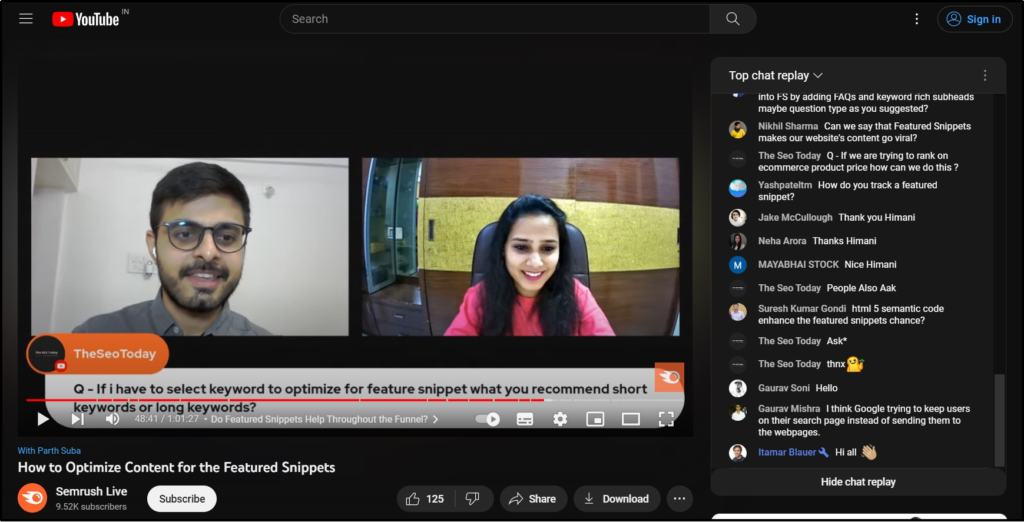
7. Use Video Marketing to Get Attention
According to Wyzowl’s 2021 survey, 86% of businesses now utilize video marketing as a marketing tool, up from 61% in 2016.
Apparently, video marketing is an effective lead generation strategy for B2B companies, given that 84% of these same companies say video has helped them generate leads.
You can start by creating a YouTube channel for your company if you haven’t already and start posting content related to your niche.
However, it isn’t enough to simply post videos. Make sure that the clips you create evoke emotion and address your target clients’ marketing problems directly.
Moreover, you should also share the video marketing material over social networks to educate or attract your potential customers.
See how Payoneer, a payment platform, leverages video marketing to increase brand awareness on social platforms.
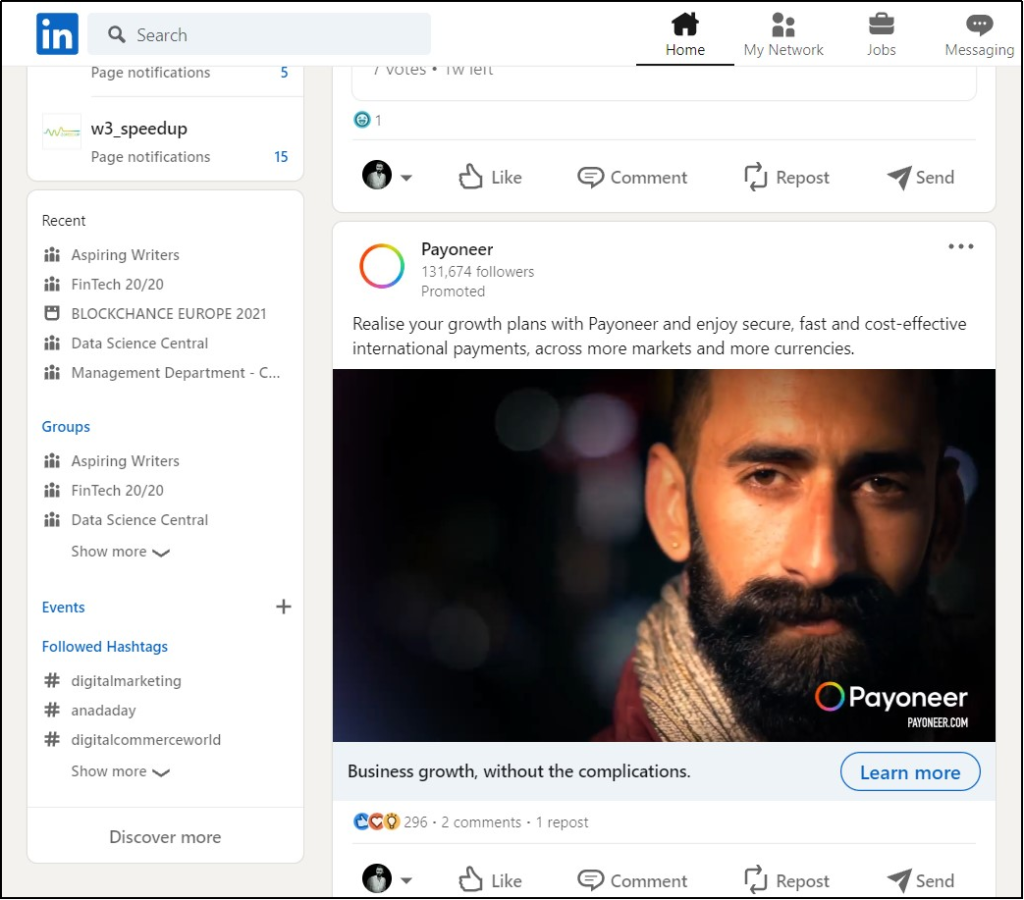
8. Publish and Share eBooks
B2B brands prefer to offer eBooks as a lead magnet because they provide insight, knowledge, and authority. As a result, they make for an attractive “free” product for prospective clients.
Publishing eBooks is an excellent lead generation strategy that adds value to your gated content, which is an important consideration.
While blog posts, videos, and infographics are all other forms of content that may be used for lead generation, they are usually used for brand awareness and visibility at the top of the funnel.
Whereas an eBook can deliver the in-depth information decision-makers are likely seeking in a more comprehensive fashion.
See how Curata leveraged eBooks content format to educate their audience.
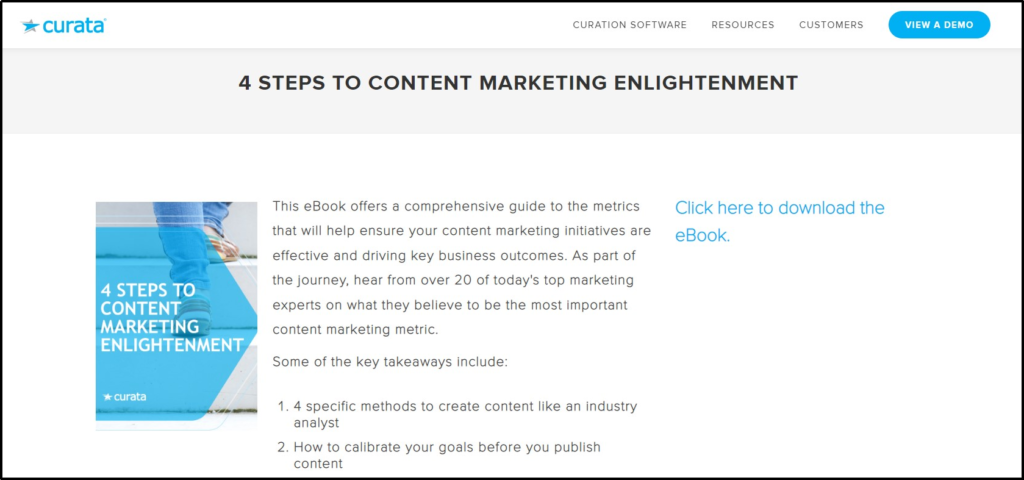
9. Leverage Influencers for Lead Generation
Influencer marketing has become a very popular B2C marketing strategy in recent years, particularly with younger audiences. However, B2B firms can also benefit from using it as a lead generation strategy.
According to a DemandGen study from 2021, 40% of B2B executives reported placing importance on consuming credible content from industry influencers. Trade event speakers, industry journal contributors, and other relevant, authoritative media personalities in your sector, for example, are good examples.
Once you’ve identified suitable people to work with (and if their audience is relevant to your goals), you should seek to connect with them and convince them of the value your firm provides.
Here is an example of Sprout Social working with influencers to claim a reach to 27k+ people.
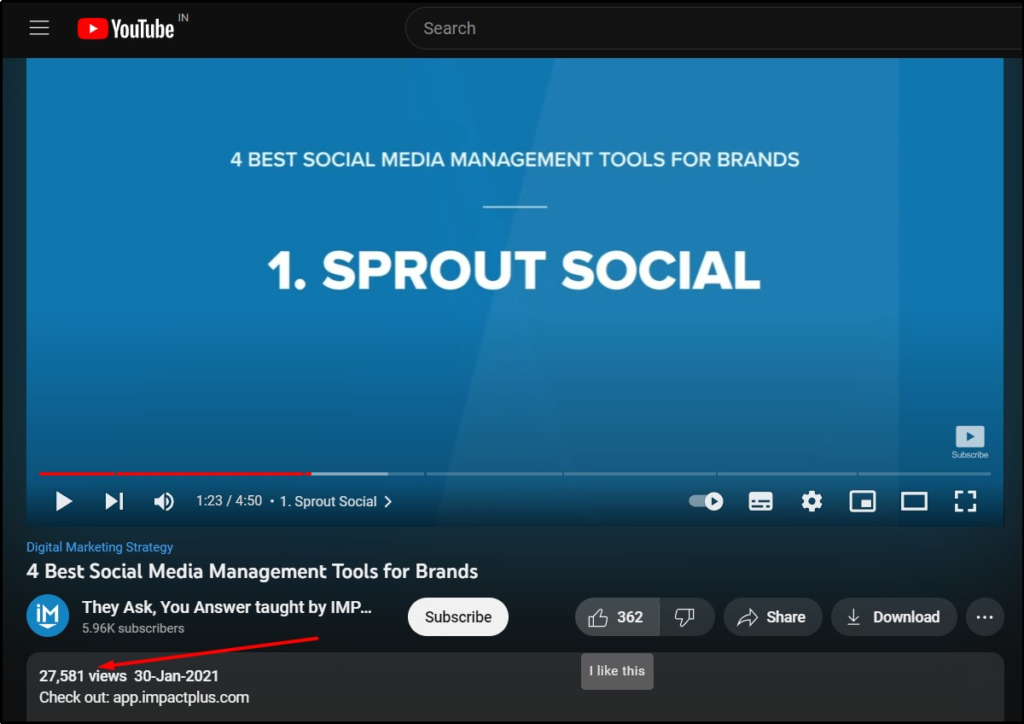
10. Create or Be a Part of Facebook and LinkedIn Groups
Using a Facebook or LinkedIn group to engage with potential customers, assist individuals in solving their issues, and discuss key topics is an excellent lead generation strategy.
You may also utilize the group itself as a medium to advertise the other strategies I’ve discussed previously.
You can entice people to join your group by capitalizing on a sense of exclusivity, then gain key contact information from them during the group sign-up process. You can even link your Lead Ads campaigns to the promotion of your group.
If you don’t have the bandwidth to create and manage your own social network group, you can join existing ones and then start providing your prospects with valuable content.
See this example of a LinkedIn group for the blockchain niche.

Using such groups, you can educate your prospects on their issues and help them find solutions.
11. Join Industry Events and Trade Shows
Participating in industry events and trade shows is among the proven lead generation strategies. This old-fashioned way of networking offers significant potential to generate leads.
It is important to participate actively in other people’s events to fully benefit from this tactic. You can even create your own dinners, meet-ups, and award ceremonies, for example, and invite the decision-makers you’d like to build relationships with.
I leverage this lead generation technique for Missive Digital. Here is a recent event I attended.
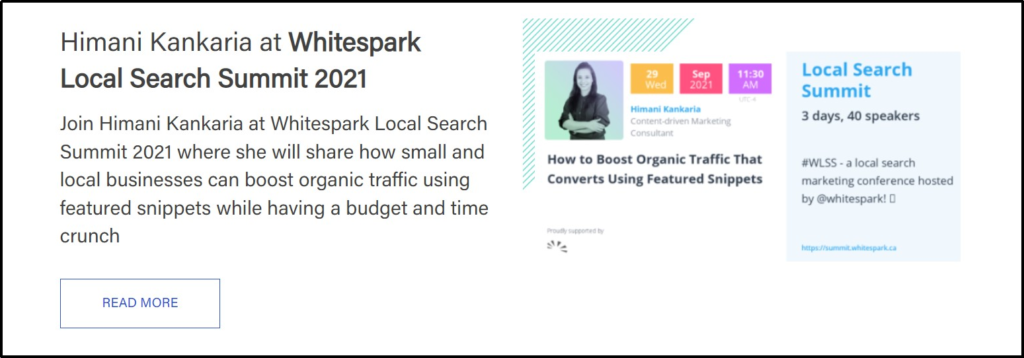
12. Create an Incentive-Based Referral System
Referral programs have become even more effective among successful lead-generation strategies because they are easier to quantify and track than ever before.
Hence, it’s imperative for businesses to leverage the power of word-of-mouth marketing by offering referral incentives to their loyal customers.
You should also establish connections and build informal and formal partnerships with upstream partners, similar businesses, and niche partners in order to drive a qualified lead generation flow.
Alright, these strategies should get you enough leads to work on. But no matter how targeted your lead generation campaigns are, it’s always possible that you’ll get a mix of good and bad quality leads.
So how do you filter them?
Let’s find out.
How to Qualify Your Leads
Salespeople categorize leads using a variety of parameters in order to decide whether a lead has the potential to become a customer, including their budget, needs, and position in the firm.
Because salespeople want to know which leads to pursue and which to abandon early in the sale process, they have to qualify them carefully.
Also, lead qualification help salespeople focus their efforts on learning about the needs of only those prospects that tend to convert.
Custom Image
So, this is how you can qualify leads:
- Define your ideal customer – Start with creating buyer personas by analyzing your existing ideal customers for their business challenges and possible solutions.
- Create a scoring system – Quantifying the lead’s possibility to become a customer is one of the best strategies for lead qualification. You should assign a numerical value to your leads on a scale from “interested’’ to “ready for sale.”
- Nurture your leads – Based on the lead score (on the scale), you can create strategies to advance them to the funnel. For example, someone who has shown interest in your product should be nurtured with a free product demo.
4 Best Practices to Improve Lead Generation
As there are a lot of elements to keep track of when running a lead generation campaign, it gets difficult to determine which components are producing results and which require additional work.
Implementing a lead generation strategy is a complex thing. Here are some pointers to keep in mind when developing campaigns using the discussed lead generation strategies:
Use the Right Lead Generation Tools
The most successful sales and marketing teams usually employ a structured method to store and manage their leads. In such cases, lead generation software can be of assistance.
It helps your teams know about people visiting your website, analyze which pages they’ve shown interest in, what’s their navigation trend, and what inspires them to get in touch with you.
If you don’t have insights into such information, you’ll have difficulty connecting with visitors. But, with the right lead generation software like WPForms, Leadpages, Mailchimp, ReferralCandy, and more, you can accomplish this.
Create Inescapable Offers for Different Checkpoints in the Sales Cycle
While certain visitors are prepared to speak with your sales team or try out your product, others are looking for an educational piece such as an ebook or a guide.
Those at the beginning of the purchasing journey may seek out an informational resource.
In contrast, those who are more familiar with your organization and near the end of the buying journey may seek a free trial or demonstration.
So make sure you have exciting offers for every stage of the buying journey and offer an appropriate call to action.
Keep Your Marketing Communication Consistent and Deliver the Promise
The most effective lead generation programs are the ones that satisfy the requirements of their users and produce a smooth transition from ad text and design to the delivered material.
Here, consistency in message throughout the process, as well as providing value to all those who engage with lead capture, is crucial.
Hence, make sure that everything on your website, blog, and in your product reflects the aspects of your lead generation campaign.
Involve Your Sales Teams in Strategy Creation
lead generation strategy elements like lead sourcing, scoring, and nurturing cannot be performed the best without the sales team’s involvement.
For instance, how would you know what qualifies a lead for sales if you don’t know whether or not your defined SQLs are successfully sold?
Hence, before you begin capturing leads, your marketing and sales teams must agree on the definition and process of transferring a lead from MQL to SQL, and so on.
Also, your funnel may need to be fine-tuned over time, but make sure everyone is informed. Finally, your definitions may need to be changed over time as well.
Frequently Asked Questions on lead generation strategies.
1. What are the top inbound lead generation strategies?
The following are the best inbound lead generation strategies for 2023:
- Ranking blogs and service pages on Google
- Using AI-powered chatbots to nurture leads
- Posting blogs to educate prospects
- Hosting or participating in webinars
- Using video marketing
- Publishing and sharing eBooks
- Sharing content on Facebook and LinkedIn groups
2. What are the top outbound lead generation strategies for B2B companies?
The top outbound lead generation strategies for 2023 include the following:
- Running paid advertisements on Google, Twitter, Facebook, and Local Media
- Using LinkedIn Sales Navigator
- Email marketing
- Influencer marketing
- Industry events and trade shows
- Referral marketing
3. What are the different types of leads?
Leads are of different types based on their nature and mode of acquisition. Following are the types of leads based on their lifecycle stage.
- Marketing Qualified Leads
- Sales Qualified Leads
- Product Qualified Leads
- Service Qualified Leads
4. What are the top B2B lead generation strategies?
The following 12 B2B lead generation strategies drive the best results:
- Broadcast advertising to your customer niche via Google Ads, Twitter Ads, and Facebook Ads
- Use LinkedIn Sales Navigator
- Post blogs and reports to educate your prospects
- Rank blogs and services pages on Google
- Automate email marketing and leverage AI-powered chatbots
- Host or participate in webinars
- Use video marketing to drive engagement
- Publish and share eBooks
- Leverage influencer marketing
- Create or be a part of social networking groups
- Participate in industry events and trade shows
- Offer incentive-based referral programs
5. How do you qualify the leads?
A lead generation strategy should include lead qualification. Here is how you can do that:
- Create buyer personas to define your ideal customers
- Create a scoring system on a scale of “interesting” to “ready to buy”
- Nurture your leads with information and content based on their position on the scale
6. How to improve lead generation?
Coupling your lead generation strategies with the following tips will surely help you improve leads inflow:
- Use the right lead generation tools
- Create inescapable offers based on the different checkpoints of the sales funnel
- Maintain consistency in your marketing communication and deliver what’s promised
- Make your sales teams a part of the lead generation process and strategy
7. What different types of content should I produce to nurture my leads?
You can nurture the leads by offering information at every checkpoint of the customer journey like the following:
- Attention: Blogs, infographics, social media posts, thought-leadership content
- Interest: Use cases, guides, etc.
- Desire: Product demos, case studies, etc.
- Action: Product manual and other supported content
Lead generation is the first step for a business; make sure it’s settled right.
When it comes to lead generation, there are numerous strategies to choose from, including those I’ve covered here. What’s critical, however, is whether or not they will work for your company.
Therefore, as you develop your B2B company’s lead generation strategies, make sure that you understand the strategy in-depth and have created an execution plan.
If you want to know more about any of the lead generation strategies I’ve discussed in this article, feel free to ask for them in the comment section.

